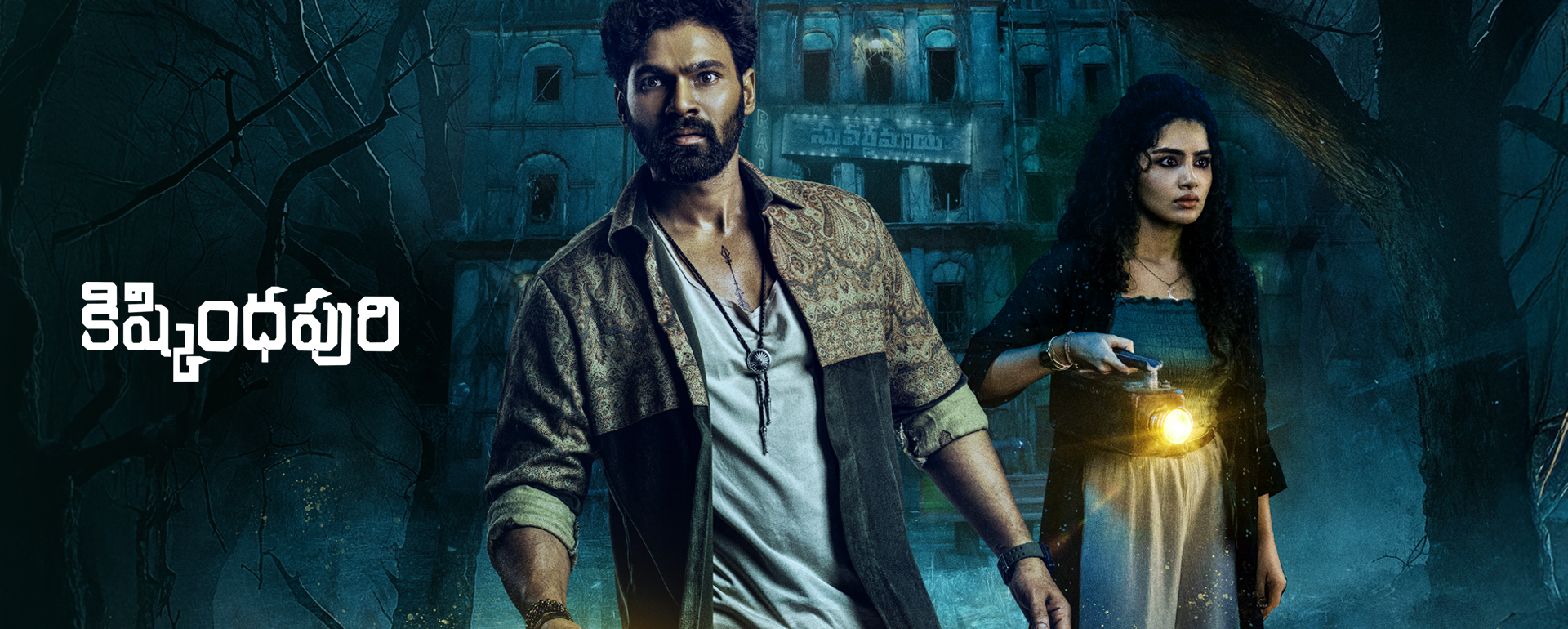Horror is easy to over-season. Kishkindhapuri does the opposite. It builds dread the patient way—through space, silence, and the uneasy feeling that something followed you home when you weren’t looking. Directed by Koushik Pegallapati and led by Bellamkonda Sai Sreenivas with Anupama Parameswaran, this is a genre piece that trusts logic as much as jumps. The setup is simple; the execution is careful. That’s why it lingers.
If you’re mapping a watchlist, begin here and—just once—dip into our discovery lanes: browse the full Movies hub, zero in on Telugu movies, and stack mood-first picks from Horror movies, Thriller movies, and new movies before circling back to Kishkindhapuri for a lights-down, phones-away first play.
The Premise
A small outfit runs after-dark “haunted walks.” One tour takes the group to an abandoned radio station on the edge of town. Doors give way, static crackles, and the soundboard wakes like a nervous animal. The team heads home thinking it was a good night for business. It wasn’t. Kishkindhapuri leverages that simple hook—something returns with them—and lets the fallout escalate with cause-and-effect precision rather than cheap feints. The film’s best trick is the feeling that scenes end half a beat sooner than you’d like, so you lean forward to hear what the room isn’t saying.
Performances: Measured Turns That Sell the Fear
Bellamkonda Sai Sreenivas plays Raghav with a working-professional’s calm; his choices read as risk management, not hero theatrics. Opposite him, Anupama Parameswaran’s Mythili wears worry like a second skin—alert, practical, never ornamental. The ensemble around them clicks into place: Makarand Deshpande adds wiry unpredictability; Hyper Aadi and Sandy Master bring lived-in texture without deflating tension. The result feels like a team trying to keep a business afloat while reality frays at the edges—recognisable people, not horror mannequins.
Direction and Writing: Restraint Over Rhetoric
Koushik Pegallapati stages fear as accumulation. The camera stays at human height; the edit gives you just enough geography to anticipate a corner before turning it. When the film needs a rise, it earns it with blocking and sound—no orchestral wallpaper shouting what your eyes already know. Dialogue stays clean. Subtext does the heavy lifting. And when a reveal lands, it feels like the only possible answer given what we’ve seen, not a twist grafted in for applause.
Craft: When Image and Sound Share the Load
Chinmay Salaskar’s cinematography favours practical light and deep corridors, building a sense of depth you can get lost in. The sound team finds music in small-town night—distant engines, tired shutters, a loose cable whispering across the floor—and Chaitan Bharadwaj’s score steps in like a pulse, not a megaphone. Notice how the mix lets you hear a room resign itself before a character does. It’s the sort of detail that makes Kishkindhapuri feel larger than its footprint.
Language Tracks and Access
We’ve made Kishkindhapuri easy to share at home: beyond Telugu, you can stream in Tamil, Kannada, Malayalam, and Hindi audio tracks. The horror lands in any language because the film leans on visual logic—what moves, what echoes, what refuses to stay where it was left—rather than dialogue alone.
Release Timeline: From Theatres to Your Screen
The film opened in cinemas on September 12, 2025, and rolled to its digital premiere on ZEE5 from October 17, 2025—a window that kept buzz close to first impressions. If you saw the trailer and filed it under “watch soon,” this is your clean chance to catch up the right way: one sitting, sound up, lights low.
Why Kishkindhapuri Works
Because it respects physics—of rooms, of guilt, of rumour. Because it keeps the camera honest and the score on a leash. Because its fear comes from something you can trace on a floor plan, not a ghost that teleports to suit the jump. Most of all, because Kishkindhapuri remembers that horror turns on recognition: a key that won’t stay put, a voice you were sure belonged to someone in the next room, a red light that flickers when no one’s at the console. Those are everyday anxieties; the film simply sharpens them.
Who Should Press Play
If you like your horror logical yet unnerving, this is the lane. You come for performances that soften panic rather than display it? You discover plenty to respect. You loved the touch charms of old tech—switches, dials, cables—at some point? You will appreciate how this film transforms a radio station into a home of small dangers where every click feels like a question.
Watch Tips for Maximum Impact
Give Kishkindhapuri a clean window: set your audio/subs once, dim the room, and let the film’s rhythm set the terms. It’s built for a single sitting; the escalation plays best when you can feel the intervals shorten between disturbances. If you’re the pause-and-replay type, save rewinds for a second viewing to chase breadcrumbs the sound mix hides in plain hearing.
Final Word
Kishkindhapuri is confident, contained, and credibly scary—the kind of horror-thriller that grows by inches until you realise it has you by the throat. Nothing here feels inflated. The film trusts atmosphere, respects story logic, and lets its cast carry fear like a real burden. When credits roll, the aftertaste is earned: you’ll go back to one early scene and hear the room differently. That’s craft, not luck—and it’s why this title sits comfortably on your must-watch shelf.
Bio of Author: Gayatri Tiwari is an experienced digital strategist and entertainment writer, bringing 20+ years of content expertise to one of India’s largest OTT platforms. She blends industry insight with a passion for cinema to deliver engaging, trustworthy perspectives on movies, TV shows and web series.




